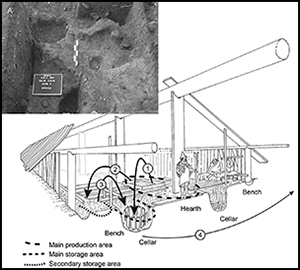Article contents
Use-wear, chaîne opératoire and labour organisation among Pacific Northwest Coast sedentary foragers
Published online by Cambridge University Press: 05 June 2015
Abstract

The pre-Contact foraging communities of the north-west coast of North America have long been recognised as exhibiting many of the features we associate with agricultural societies, including sedentism and social inequality. Evidence from the pre-Contact plank house communities of Meier and Cathlapotle throws new light on the spatial organisation of these societies. Detailed analysis of stone tools allows the spatial division of labour to be determined within these large, multi-family households. This reveals that while some tasks were associated with particular social ranks, a hierarchical community can be identified in each plank house. Overall, the differences lie in the degree of engagement rather than the kind of activity, helping to characterise labour organisation among these unique, sedentary foragers. The results also provide insight into the potential of stone tool analysis for social reconstruction.
Keywords
- Type
- Research
- Information
- Copyright
- Copyright © Antiquity Publications Ltd, 2015
References
- 3
- Cited by


